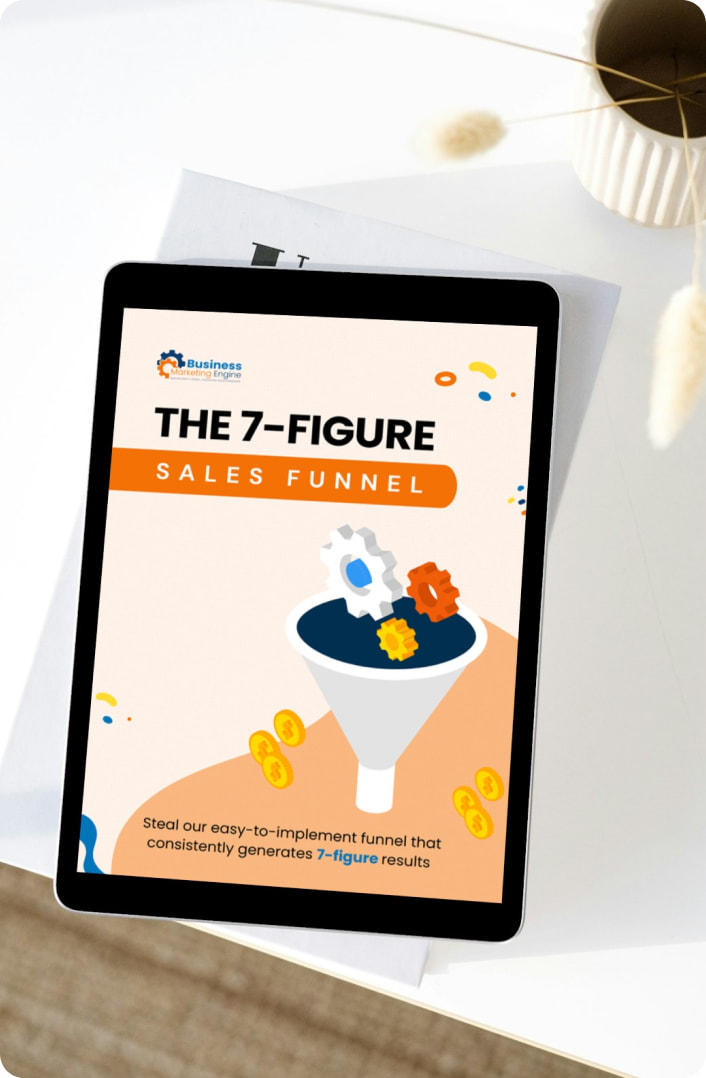Author and spiritual master Amit Ray once said, “We are constantly evolving as we are interacting with the world.”
But what about the evolution of digital marketing?
Are you able to keep up with the constantly changing landscape of digital marketing? Are you comfortable with how quickly you have to change with the growth of digital marketing?
It feels like every day, there’s a new trend emerging. It seems as though there’s never enough time to follow up with all of it, or teach everything to your team.
But it doesn’t have to be that way.
Because once you have a better understanding of the digital marketing history timeline, you’ll be able to keep up with what your audience needs from you. You’ll be able to contribute to the evolution of digital marketing itself.
You’ll be able to capitalize on the benefits of digital marketing far better than ever before.
You will have a deeper appreciation for marketing as a whole– and you’ll know how to leverage it to your advantage.
Today, we are going to help you do just that.
So, without further ado, let’s do a deep dive into the evolution of digital marketing…
Digital Marketing of Today
Maybe you’re new to the marketing space.
In that case, before we get started, let’s talk a little bit about what digital marketing is, exactly.
You may have already guessed it, but digital marketing is pretty much just what it sounds like.
It’s similar to traditional marketing in that you are still promoting your brand, products and services.
But that’s just the meat and potatoes of it.
When you think of traditional marketing, odds are the first things that come to mind are mail-in brochures and massive billboards. You’re probably thinking of newspaper ads, telemarketing and posters on the insides of public transportation.
You wouldn’t be wrong. And all of those things are still incredibly effective.
But with the evolution of marketing comes the need for a fresh approach, too.
These days, you need a multichannel approach to marketing. Without it, you’re bound to end up winning less market share. You’re way more likely to end up with less solid relationships with your audience, too.
Like we said, though, you do still need to take advantage of traditional marketing to get the most out of your campaigns. Sometimes, you need a radio ad to reach a certain region, for example. And other times, you need to turn to social media marketing to connect with a younger audience.
Why did the evolution of digital marketing happen in the first place, though? What’s the point of it all?
There are plenty of reasons, like the fact that digital marketing is often more affordable than its traditional counterpart. Plus, the digital marketing market size is way bigger than your pool of ideal customers hanging out around traditional channels.
But more on that later.
If you want to cash in on a mix of both traditional and digital marketing in the meantime, send us a chat at Business Marketing Engine. It’s what we do best.
Who Started Digital Marketing?
So, when did this whole thing start? Why’d they start it at all?
Let’s get into a quick timeline of events here…
Think back to the time of Nickelodeon in its prime. The age of cheesy sitcoms, acid-wash jeans and movies that still prove to be all too quotable.
We’re talking about the 90s here, and it was known for way more than its fashion trends.
“Digital marketing” was coined during the same time.
As far as who started it, though? That’s a little bit harder to say.
Countless people contributed to its origin. There was Ray Tomlinson, the first person to send an email in the early 1970s. There was Philip Kotler, a professor who took marketing and essentially turned it into a career path for college students.
Though some still argue about who spurred the evolution of digital marketing, nobody can argue that you need it to succeed as a business.
The 4 Stages of the Digital Marketing Evolution
When you’re trying to break down the shift in marketing from where we were almost a century ago to today, you can do so in four stages.
Back in the dark ages of marketing, nobody connected with their audience in a meaningful way. It was a matter of “sell, sell, sell,” leaving little room for genuine relationships with their customers.
That doesn’t fly anymore. Customers have higher expectations than ever before, making it seem trickier and trickier to reach the right people with the right marketing messages.
To help you understand just how much the times have changed in the evolution of digital marketing, let’s go back to the beginning.
Production Era
Yep. We meant the very beginning.
You can mark the production era of marketing at the time of the Industrial Revolution. In the simplest of terms, this was a time when buyers wanted to buy cheap goods– and sellers were more than willing to provide.
Factories were booming, and large-scale manufacturing was in its infancy– and its prime.
The idea of marketing was there, but it was also kind of unnecessary. Manufacturers were producing products in a big way. Consumers were buying those products in a big way to match.
Companies thought that if they put something on the market, consumers would purchase it right away.
Guess what?
They were right.
But the times were changing, and so were consumer demands.
Sales Era
Following the Industrial Revolution, from the 1920s to the 1940s, a new era came around.
The sales era popped up right around the time when competitors started to saturate the market. More and more businesses were joining the ranks. More and more buyers were expressing their need for different kinds of products.
How were businesses going to compete?
With effective marketing, of course!
But as it turns out, their approach to their audience was anything but effective. Instead, they took on the idea that they needed to turn a profit instead of form actual relationships.
This meant there was less of a focus on quality assurance and more of a focus on selling. (And selling fast.)
These business owners and manufacturers couldn’t have cared less about whether their customers were happy. They just cared about cashing in on persuasion– and cash, of course. Profit was the name of the game, and consumers were figuring that out.
Enter: the smarter buyer.
Marketing Era
Sure. Generating revenue and turning a profit is a must if you want to experience business success firsthand. But you also have to consider that you cannot get to that point without intentional marketing.
That’s the same realization businesses came to in the marketing era.
This is when forward-thinking companies started to invest in their marketing teams. Strategic marketing fast became a must for those business owners and marketers who wanted to stand out from the crowd.
They stopped looking at pricing as something that they could throw around willy-nilly. Promotional campaigns were moving forward, full-speed ahead. The list goes on.
But these business professionals were still missing some key parts of what a successful marketing department needs to win more market share. There were not a whole lot of informational silos, sure. But this was because sales, advertising, marketing and anything in between were often part of the same team.
Marketing Company Era
As you can imagine, the marketing era was not the end of the evolution of online marketing. There was still a lot left to desire.
And that’s right when the marketing company era came to be.
This is when marketing departments began to form– and more fully develop.
Organizations, no matter the size, were realizing how important marketing was as a whole. They were starting to educate all team members– not just professional marketers– on how to market for success.
And guess what?
Consumers were feeling the effects of those beliefs.
Customer satisfaction was high on the list of priorities. That idea of “the customer is always right” was taking over, too.
How Did Digital Marketing Evolve From Traditional Marketing?
Defining the evolution of digital marketing is not just about those four areas we talked about above.
You can also see it evolve, in real-time, by taking a look at certain events that were happening in more modern times.
There were, of course, an almost endless list of events that had an impact on marketing as we know it today. But in general, you can think of the following six events if you want to get a firmer grasp on how digital marketing came to be…
 The Launching of the World Wide Web (www)
The Launching of the World Wide Web (www)
In 1991, the World Wide Web launched.
It might come as a surprise to some of the younger folks who have used it since they could remember, though, that it really made a splash in 1994.
This is when Netscape came out, the first well-known internet browser. Netscape made browsing the internet accessible for many more people at this point. Once internet users started multiplying, the demand for other search engines increased as well.
That is right when Google, Yahoo and other popular search engines started popping up.
Can you take a stab at what the invention of the World Wide Web brought to the table?
Keywords. After all, that’s how Google and other search engines pull up the results we’re all so used to seeing at this point.
And what comes with keywords?
The need for Search Engine Marketing.
In other words, marketers had to learn Search Engine Optimization (SEO), Pay-Per-Click (PPC) advertising and other tactics to boost brand visibility on the web.
This was also the time when content marketing hit the collective mind of marketers.
“Content” is anything you create to talk to your target market. Whether that involves copy, graphic design or videos, it all works in your favor when it comes to your marketing.
Search Engine Marketing plays a huge role in the blog posts you create. That’s why it only makes sense that content marketing continues to hold importance to this day.
The Rise of Social Media
Social media: we all know about it. Almost all of us have at least one social media platform.
So why wouldn’t you use it to connect with your market?
Platforms like Facebook and Twitter are no longer just for sharing snapshots of your food, or posting family vacation photos. Now, they’re a channel for connecting with your audience on a deeper level, running paid ads campaigns and engaging in influencer marketing.
When did it all start, though?
Reid Hoffman brought LinkedIn to the social media stratosphere in 2003.
Mark Zuckerberg founded Facebook in 2004.
Jack Dorsey came out with Twitter in 2006.
Kevin Systrom and Mike Krieger launched Instagram in 2010.
Our biggest takeaway here? It did contribute to the evolution of digital marketing– but social media marketing is not going anywhere. Not by a long shot.
Mobile Marketing
It’s no secret that the modern web browser conducts most of their online searches from their mobile devices.
After all, when was the last time you sat down at your desk, opened your laptop and pulled up Google just to make a 3-second search query? We’d bet that it’s been a while since that happened.
Why is that, though?
It has a lot to do with mobile marketing entering the scene.
Google spearheaded the Accelerated Mobile Pages (AMP) initiative to optimize site speed for mobile devices. That’s for good reason, too. So far in 2022, a little over 47 percent of internet visits are from desktops. That’s compared to almost 53 percent of mobile browses.
This means that if you’re not optimizing your marketing campaigns for mobile users, you’re missing out on endless opportunities to reach the right people at the right times.
Data-Driven Marketing
We’ve said it before, and we’ll say it again (and again, and again)…
If you’re not measuring your marketing results, how do you know if you’re following the right path?
Hint, hint: you won’t.
The good news is that this doesn’t have to be a problem anymore. At least, not after the rise of digital marketing data, it doesn’t.
The evolution of digital marketing would be but a pipe dream if it weren’t for data-driven marketing.
How does it work?
There’s a lot that goes into it, but we’ll keep it simple here.
You can collect consumer data from marketing campaigns via Customer Relationship Management (CRM) platforms. From there, you can analyze data to keep putting out marketing initiatives that resonate with your customer base.
Adjusting, optimizing and learning from your marketing is never something you can ignore.
Voice Search and Voice Assistants
Have you ever heard of gamifying your content? If so, have you ever tried it out yourself?
Gamification plays a heavy hand in engaging your audience. Maybe you’re a fan of giveaways and contests on your brand’s social media pages. Maybe you prefer interactive quizzes on the apps you develop. Either way, you have a lot of choices.
But have you ever thought about voice search and voice assistants in your marketing?
Here, you have a shot at being a key player in the evolution of digital marketing. (And it’s fun, too.)
User Experience (UX) Designs
When you imagine the marketing landscape way back in the Industrial Revolution, what do you think it was like as a consumer?
It wasn’t too great, right? (At least, you can assume as much.)
Customers were like an afterthought to businesses. We’d go out on a limb to say that reverting back to that sort of environment would be unpleasant at best.
This is in no small part because of User Experience (UX) becoming a priority for marketers. UX designs are when designers come up with designs that matter to users. There is no stone they leave unturned as far as functionality and on-brand execution.
The results show for it, too.
The Future of Digital Marketing
Thanks to data and a deeper appreciation of these marketing trends, accurate predictions for the future aren’t hard to come by.
What are some of these predictions, you might be wondering?
Here’s a few examples of what we’ve been seeing:
- Augmented Reality (AR). Think of Pokemon Go, or Snapchat filters, as a prime example of what’s to come in the evolution of digital marketing.
- Virtual Reality (VR). Virtual racing games and try-on features from fashion companies are just a couple examples here.
- Artificial Intelligence (AI). Customer service bots, copywriting AI tools and even navigation apps serve as prime examples of everyday AI.
There’s no doubt that the evolution of digital marketing has been a long one. But there’s also no question that the evolution of digital marketing is still in its beginning stages at this point.
How are you going to keep up? What efforts will you make to stay on top of the trends and emerge the hero of your marketing?
It’s time to join the evolution of digital marketing.
And we know how to help. Just reach out to us at Business Marketing Engine to get started today.


 The Launching of the World Wide Web (www)
The Launching of the World Wide Web (www)



